The Philippines, an island paradise in Southeast Asia, boasts a plethora of stunning beaches, lush nature spots, vibrant culture, and friendly locals. But with countless entry points and cities to explore, a usual question arises: Manila or Cebu?
Deciding which city to fly into can significantly impact your overall Philippine adventure. Manila, the bustling capital, is teeming with historical immersions and metropolitan thrills, while Cebu boasts island-hopping adventures and a more laid-back vibe. Discover which Philippine city best suits your travel interests and explore the dynamic energy of Manila or the chill charm of Cebu!
Also read: Boracay or Palawan: Which Beach Destination in the Philippines Is Better?
1. Airport
Flying into either Manila or Cebu presents distinct experiences, one of which includes flying to which airport. While both Manila and Cebu have international airports, the vibe and atmosphere of each one differ greatly.
Manila
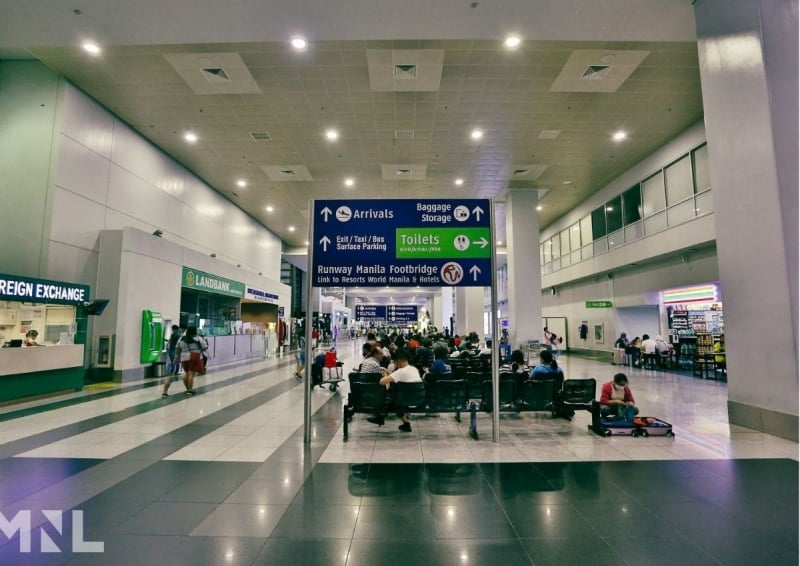
Ninoy Aquino International Airport | Image credit: Ninoy Aquino International Airport Official Facebook Page
Most Philippine adventures begin at the Ninoy Aquino International Airport, or NAIA as it’s commonly called. The sprawling international complex has four terminals, making it the biggest airport in the Philippines. And since it offers more international flights, NAIA also serves as the main entry point for many foreign tourists.
While it can get busy, reflecting its status as a major international hub, NAIA holds delightful surprises. Here, you might chance upon a local serenading fellow passengers with a soulful ballad. Terminal 3 also boasts a vibrant array of shops and restaurants, or you may find yourself surrounded by an explosion of colour from traditional woven clothes for sale.
Despite its occasional growing pains, NAIA serves as a unique introduction to the undeniable warmth and vibrance of the Philippines.
Where to stay in Manila

Image credit: Savoy Hotel Manila | Official Website
Want to stay in a hotel that’s close to Manila’s most popular hubs? Consider Savoy Hotel Manila, a winner of the 2024 Travel Excellence Awards – Value Star that offers comfort and accessibility at the best price.
Check in to a world of warmth and hospitality! Imagine unwinding in their cosy rooms, perfect for relaxing after a long journey or a day of exploring Manila’s vibrant energy. Need to get some work done? Their Square Lounges offer a dedicated workspace where you can tackle your tasks efficiently. Feeling hungry? Savour delicious bites at any of their on-site dining options: The Savoy Café, Zabana, and poolside bar.
Savoy Hotel Manila is more than just a place to stay, it’s a launching pad for creating unforgettable moments at the country’s energetic capital. Book your stay today and experience the Savoy difference!
Also read: A Guide to Travelling to the Philippines During Rainy Season
Cebu
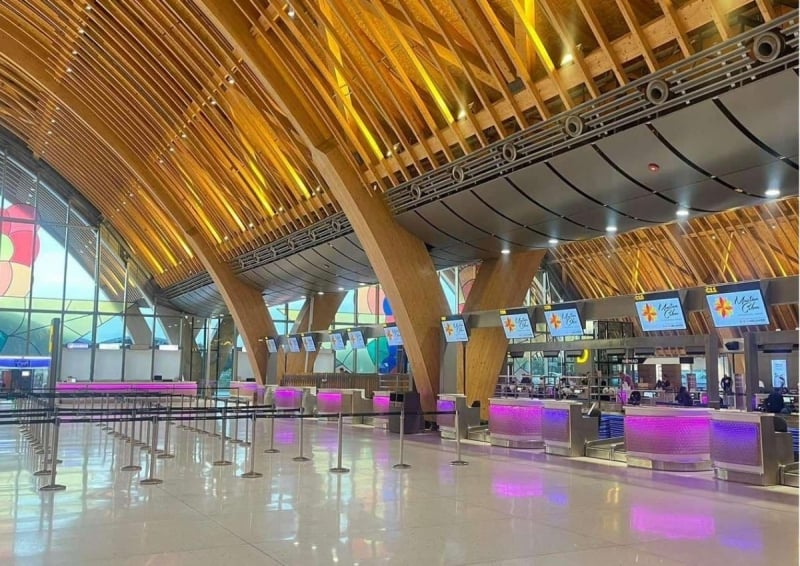
Mactan-Cebu International Airport | Image credit: Mactan-Cebu International Airport Official Facebook Page
The modern Mactan-Cebu International Airport (CEB) offers a glimpse of island life, ushering you into the complete island vibe with its layout and interiors. Just imagine stepping off the plane and being greeted by warm Cebuano hospitality, ready to whisk you away to your island adventure without the intense bustle of Manila. On special occasions like the Sinulog Festival, you’ll even be greeted with a lively dance performance, giving an energetic vibe upon arrival.
Moreover, you’ll be happy to know that many international carriers also fly directly into Cebu. These include Cathay Pacific, Jeju Air, Eva Air, and Xiamen Air, to name a few. While Manila Airport may have more destinations on its slate, Cebu remains a viable alternative to many international travellers as well.
It’s important to note that the Mactan-Cebu International Airport is located in Lapu-Lapu City on Mactan Island, not Cebu City. However, getting from the airport to Cebu City should only take you less than an hour by car.
Also read: 10 Festivals to Attend At Least Once in Your Life
2. Tourist hotspots
When it comes to tourist attractions, picking between Manila or Cebu is a win-win situation! Both cities boast a wealth of tourist hotspots, from historical landmarks to breathtaking natural wonders. Metro Manila offers a journey through Philippine history, while Cebu City serves as a gateway to island paradises. Let’s explore the must-visit attractions in each destination to help you decide where your Philippine adventure begins!
Manila
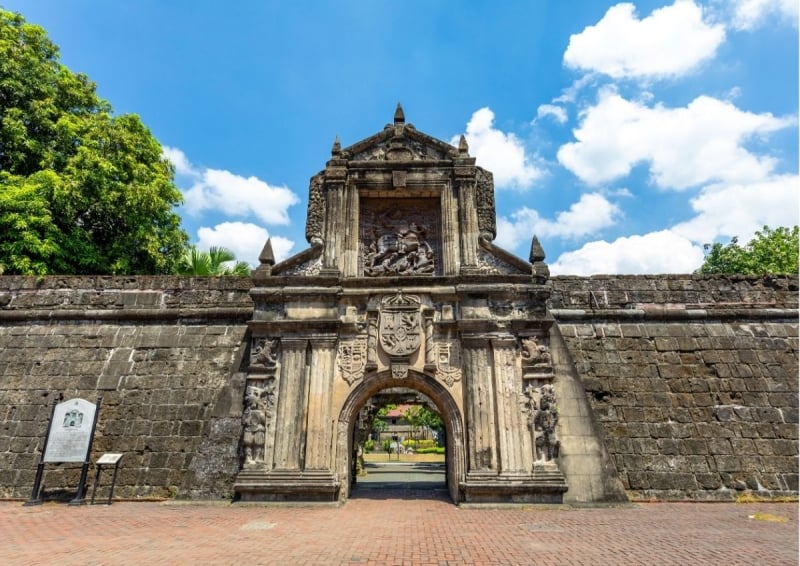
Fort Santiago | Image credit: Sean3810 via Canva Pro
Manila, the captivating capital of the archipelago, throws tourists headfirst into a whirlwind of cultural experiences. Intricate Spanish colonial architecture is practically on every corner, whispering tales of a bygone era while towering skyscrapers hum with the energy of modernity.
The city’s historical heart beats in Intramuros, a walled city imprinted with Spanish colonial architecture like Fort Santiago and San Agustin Church. History buffs and art enthusiasts can explore and learn more about the Philippine heritage at the National Museum, while Rizal Park offers a serene escape amidst the urban sprawl.

Ayala Triangle Park, Makati City | Image credit: Joseph Christopher Oropel via Canva Pro
For a taste of modern Manila, venture to the other cities of Metro Manila. Explore the glittering malls of Makati, indulge in the upscale shops and restaurants of Bonifacio Global City (BGC), or unwind along the Manila Baywalk, a scenic seaside spot perfect for catching the most beautiful Manila sunsets.
Cebu
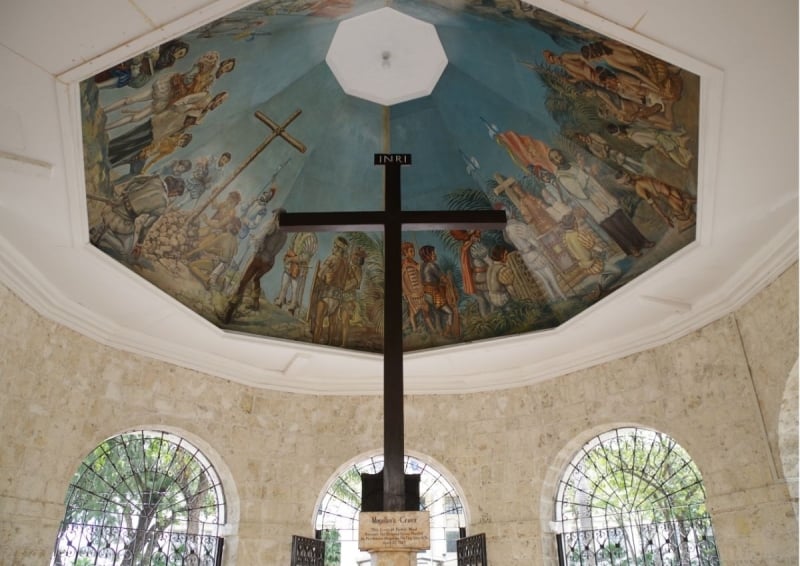
Magellan’s Cross | Image credit: RYOSUKEKUN via Canva Pro
On the other hand, Cebu City boasts a rich heritage and a more laid-back atmosphere. It serves as a fantastic springboard for exploring the wonders of the Visayas region. If you’re craving historical immersion, head on to Magellan’s Cross and the Basilica del Santo Niño, Cebu gems that date back to the Spanish colonial period.
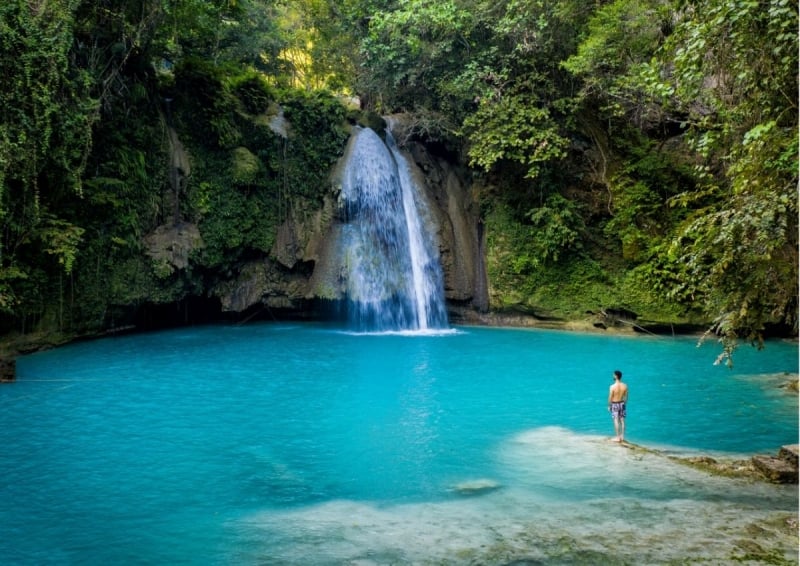
Kawasan Falls | Image credit: Oneinchpunch via Canva Pro
Compared to Manila, it’s easier to find stunning nature spots in Cebu. Kawasan Falls is only 130 kilometres away from the city, offering a nice refreshing dip amidst the warm Cebu weather. Dive into an even more immersive experience at Malapascua Island and have a close encounter with majestic thresher sharks, or find yourself enjoying a chill beach day on one of the tranquil beaches of Bantayan Island.
Also read: 10 Best Cafés in Cebu for Your Next Coffee Crawl
3. Transportation
Getting around Manila or Cebu is an adventure in itself — transportation options indeed play a big role! Navigating through either the bustling system or relaxed pace of Manila and Cebu is an important factor in considering which city to fly into. So, let’s delve into each one’s pros and cons.
Manila

Manila jeepney | Image credit: Andrey Khrobostov via Canva Pro
Manila has an extensive public transportation network that makes it a considerable option for budget-savvy tourists. The iconic jeepneys offer a cheap and thrilling way to navigate the city. On the other hand, tricycles are perfect for quick trips from one street to another. Kalesa is another option, though it’s only for tourists going about their way in the walled city of Intramuros.
Luckily, Manila’s transportation scene caters to every budget and comfort level. For a quick and affordable option, you can take the MRT (Metro Rail Transit) and LRT (Light Rail Transit) trains. Buses offer even wider coverage, but it can get pretty crowded during rush hour. Taxis are also readily available while ride-hailing apps like Grab provide a more convenient and comfortable alternative. For shorter trips, Angkas, a motorcycle ride-hailing service, is also a popular option.
Hop on a jeepney for a cultural experience as you zip past the bustling Divisoria market that is overflowing with cheap local finds. While the system can be overwhelming at first, it unlocks an immersive Manila experience, allowing you to experience cheap fares and a chance to rub shoulders and exchange smiles and conversation with the locals.
Cebu
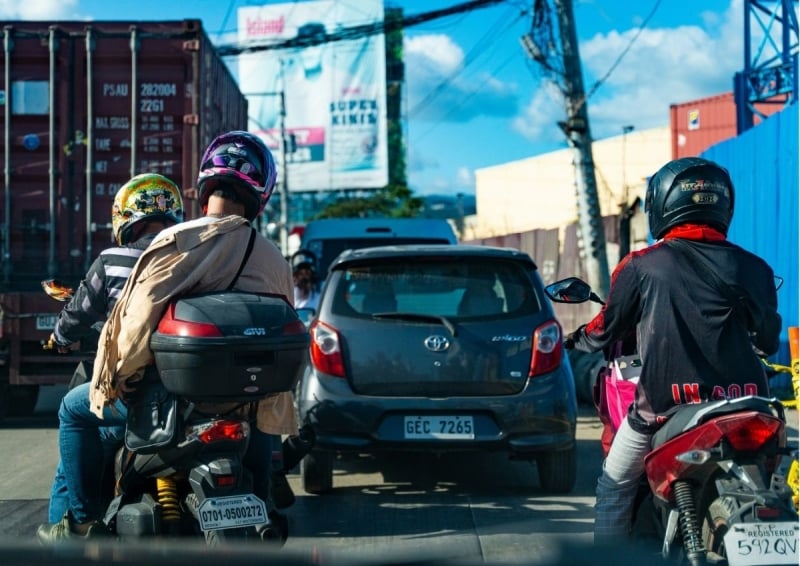
Image credit: Orbital 101 Studio | Unsplash
Meanwhile, Cebu’s transportation scene reflects its island vibe — efficient and affordable! This allows tourists to smoothly navigate the city and its surrounding gems. Jeepneys are a reliable mode of transportation in the city as they provide a budget-friendly way to get around Cebu.
If you’re not a big fan of riding the jeepneys, taxis and Grab rides are readily available for added comfort, while motorbike taxis (habal-habal) offer a thrilling, local experience for shorter trips. There’s a diverse mix of options that makes Cebu perfect for travellers who want to explore the city at their own pace.
For island hopping adventures, ferries regularly depart from the Cebu port, taking tourists to paradise destinations like Bantayan Island. If you want to explore other towns and cities across Cebu province — such as meeting the gentle giants, aka whale sharks of Oslob —, you also have quite a few options like taking the bus, riding a taxi, or booking a private ride viataking a Grab.
4. Food
When it comes to food, Manila and Cebu offer distinct culinary adventures. From steaming bowls of adobo to fresh seafood dishes, your taste buds will surely embark on a flavourful journey across the archipelago.
Manila
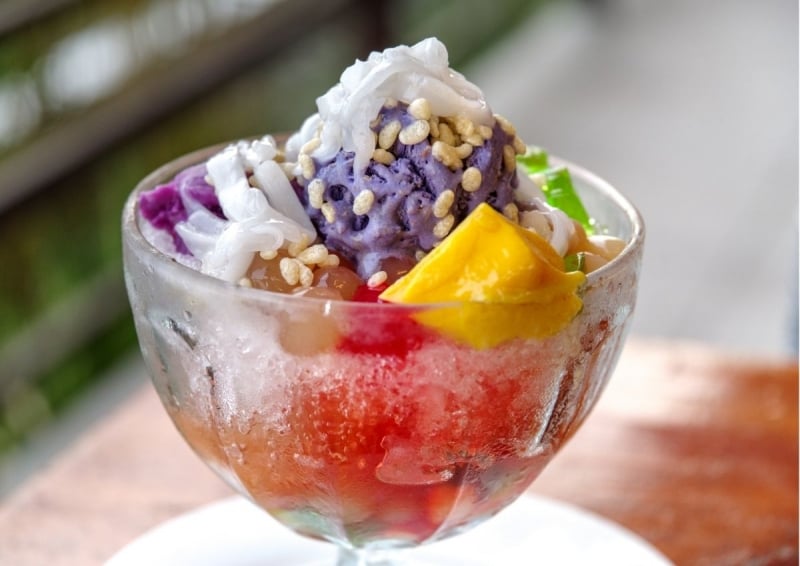
Image credit: bugking88 via Canva Pro
Metro Manila is indeed a food lover’s paradise, offering countless options of regional specialities all within reach. Filipino classics like adobo, a tangy meat dish marinated in vinegar, garlic, and pepper, is a definite must-try. For the ultimate authentic Filipino experience, dive into kare-kare, a mouthwatering dish full of flavour with peanut-based stew brimming with oxtail, vegetables, and shrimp paste. There are quite a handful of Filipino restaurants that serve local dishes like Manam, Locavore, and Little Quiapo, where you can taste other famous Filipino fare like lumpiang shanghai, sinigang, and palabok.
Coming to Manila is never complete without trying the famous halo-halo! This vibrant and flavourful shaved ice dessert features sweet beans, jellies, fruits, and leche flan. It’s perfect for beating the heat, too. Manila’s food scene is definitely an experience you shouldn’t miss.
However, if you still prefer international cuisine, Manila is big on that too! Take a walk down Binondo, the oldest Chinatown in the Philippines for authentic Chinese food options, or dine in one of the many samgyupsal restaurants that serve the best Korean BBQ around the city.
Also read: A Guide to Street Food in the Philippines: What to Eat & Expect
Cebu
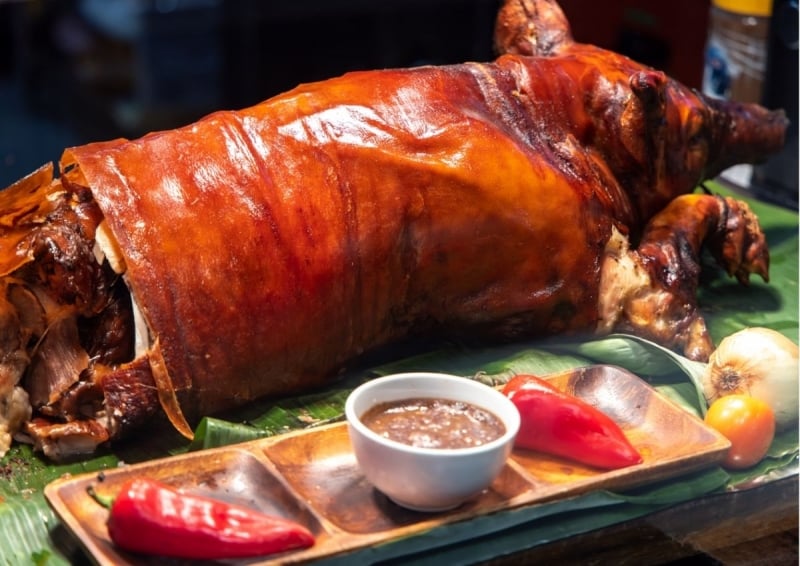
Image credit: bugking88 via Canva Pro
Meanwhile, Cebu City entices visitors with its delightful mix of fresh seafood, Spanish influences, and indigenous Cebuano specialities. Nothing beats the aroma of sizzling lechon, Cebu’s iconic roast suckling pig with perfectly crispy skin. Of course, seafood lovers won’t be disappointed because the city also boasts a variety of seafood markets like Choi’s Seafood Market and Isla King where you can choose your catch and have it cooked to perfection.
For a taste of local specialities, try sinuglaw, a refreshing ceviche-like dish that combines raw fish and grilled pork belly. Savour the taste of local comfort food pochero, a flavourful stew packed with vegetables, pork, and bananas. From casual carinderias to fancy restaurants, Cebu City’s culinary scene truly promises a delicious journey that reflects the city’s vibrant culture — one you cannot miss!
5. Nightlife
The fun doesn’t stop after sunset! Whether you crave the pulsating energy of nightclubs or the relaxed charm of rooftop bars, both Metro Manila and Cebu offer vibrant nightlife scenes catering to diverse preferences. Let’s delve into the world of after-dark adventures in each city to help you decide which best suits your party mood!
Manila
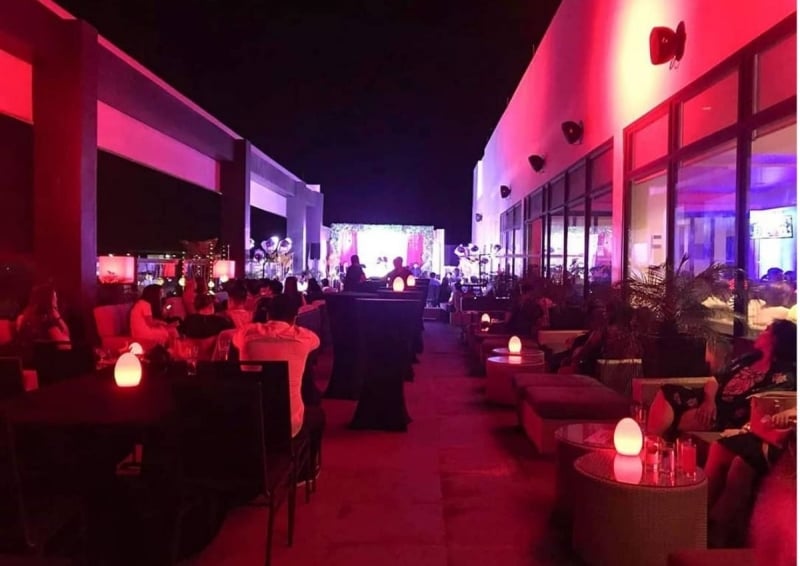
Image credit: StraightUpAtSeda | Official Instagram Page
Manila’s nightlife throbs with a diverse energy, catering to all kinds of night owls. Party animals can head straight to Poblacion in Makati, where streets are lined with energetic nightclubs pumping out everything from house to Top 20 hits.
For a more sophisticated scene, rooftop bars with breathtaking city views are all over BGC. This presents a more laid-back type of nightlife, where you sip on cocktail drinks with friends and catch up while enjoying the view and great tunes.
Live music enthusiasts will find their haven in speakeasy-style bars tucked away in hidden corners of the city, where local and international bands play everything from jazz to indie rock. No matter your vibe, Manila’s nightlife guarantees a night to remember.
Also read: 10 Exciting Things to Do and Places to Visit in Manila at Night
Cebu
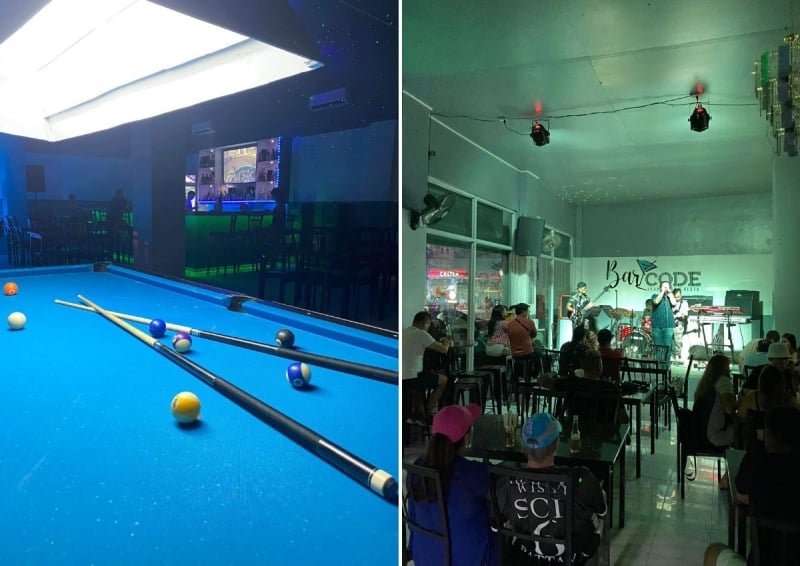
Image credit: Barcode Restobar | Official Facebook Page
Meanwhile, Cebu City’s nightlife thrums with a youthful energy, perfectly complementing its laid-back charm. Mango Avenue pulsates with vibrant bars and clubs, offering everything from live music venues showcasing local bands to dance floors thumping with international hits. If you prefer a more relaxed vibe, head to rooftop bars overlooking the cityscape. Here, you can sip on tropical cocktails and soak in the cool evening air.
Karaoke? Filipinos are known for that, but Cebuanos in particular thrive in the karaoke scene! With private karaoke rooms (KTVs), you can let loose with friends and sing at the top of your lungs after sightseeing. Whether you crave energetic dancing or a social gathering fueled by good music, Cebu City’s nightlife offers something to keep you entertained long after the sun sets.
The TZ Verdict: Manila or Cebu?
Manila or Cebu? We’d say, it’s a close call! It still greatly depends on your travel preferences. Manila holds a big part of the country’s history and cultural immersion, ideal for urban adventurers. Meanwhile, Cebu offers a breezy island charm perfect for those craving a tropical escape amidst the concrete jungle. Consider your travel style: if fast-paced exploration excites you, Manila awaits. If island hopping and a relaxed vibe are your priorities, Cebu beckons.
Another major factor: where are you off to next? Metro Manila is the Philippines’ main entry point for a reason, with flights to all corners of the country daily. Even international flights are prolific here! However, Cebu may be a better option for travellers planning to explore the Visayan region’s endless beaches, diving spots, and jungles. Other provinces in Visayas like Bohol, Negors Occidental, Siquijor, and Leyte are also easily accessible from Cebu, expanding your choices even further.
Also read: 18 Things to Do in the Philippines That Even Some Locals Don’t Know About
So, is it Manila or Cebu? Ultimately, the perfect entry point depends on your travel desires or itinerary. But no matter your choice, the Philippines promises an unforgettable adventure filled with warm hospitality, delicious food, and stunning natural beauty.
Featured image credit (L): fazon1 via Canva Pro




